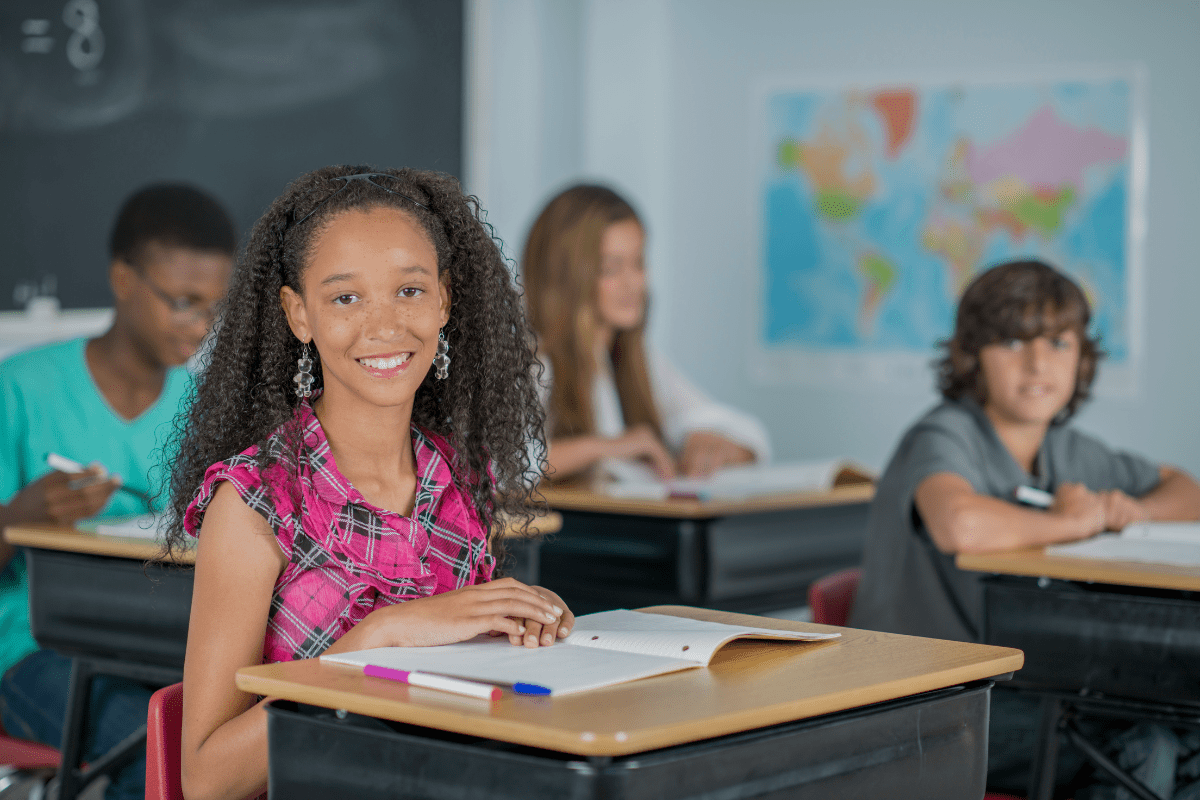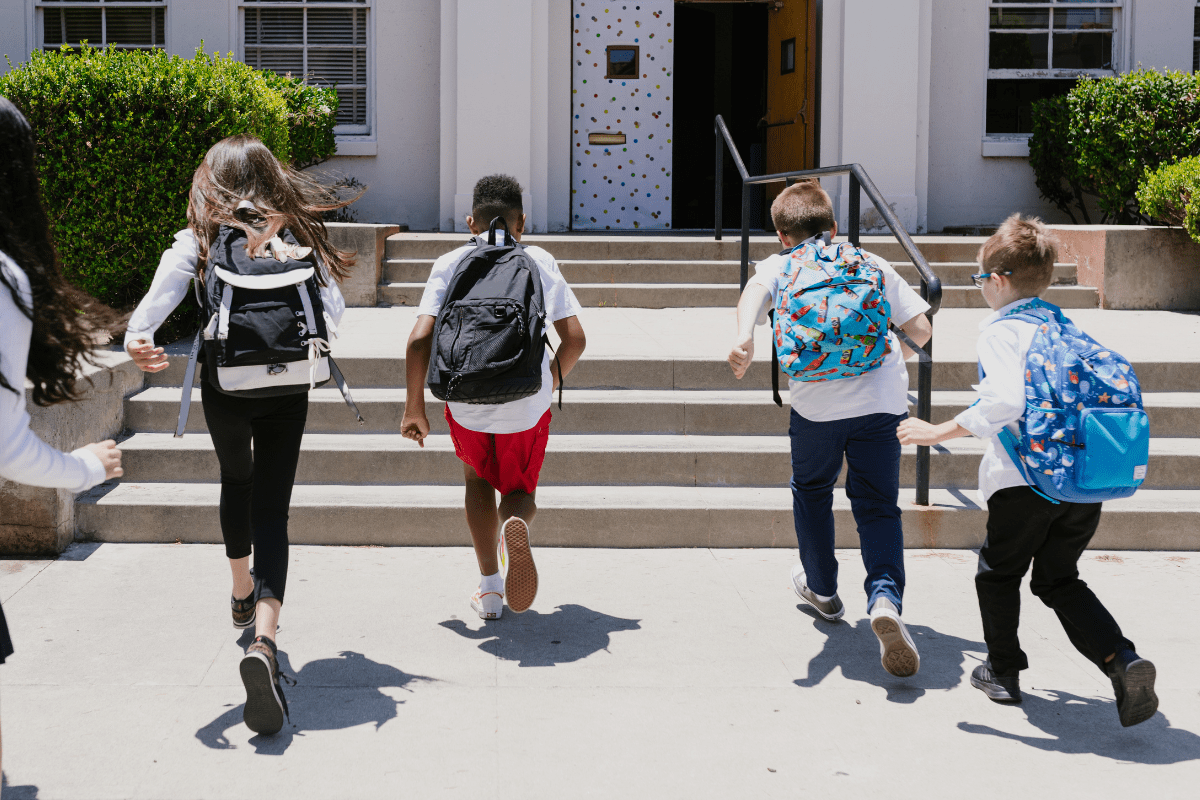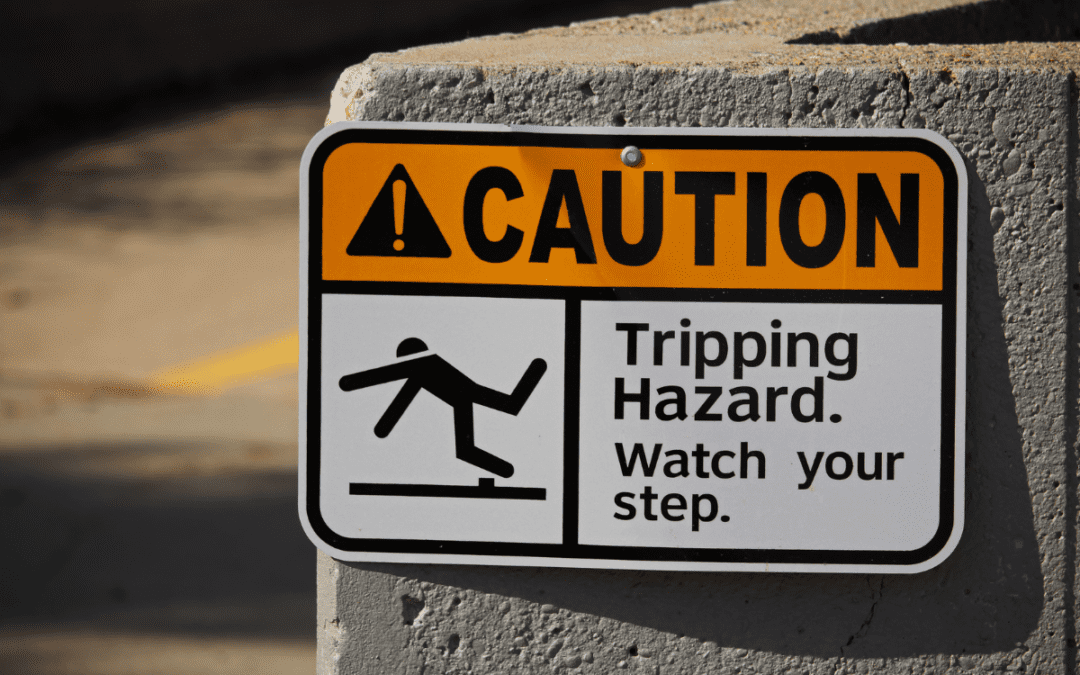Back-to-school safety is paramount as children head back to school, and understanding the legal insights on back-to-school safety can help protect your children. Ensuring a safe environment during this period is critical for parents, schools, and the community. At Bodden and Bennett Law Group, we are committed to supporting parents and guardians in understanding their legal rights related to school safety.
Importance of Back-to-School Safety
The back-to-school season is an exciting yet stressful time for many families. While it marks a return to learning and social activities, it also brings numerous safety concerns. From transportation hazards to playground injuries, the risks are numerous. Understanding and mitigating these risks is essential for protecting your children. Our law firm is dedicated to providing the necessary legal insights and support to help you navigate these challenges.
Our Commitment
At Bodden and Bennett Law Group, we believe in empowering parents with knowledge. We understand the complexities of school safety and the legal frameworks surrounding it. Our goal is to ensure that you are well-informed about the steps you can take to keep your children safe and the legal recourses available should something go wrong.
Legal Support for Parents and Guardians
Ensuring your child’s safety requires more than just following common sense practices; it also involves understanding your legal rights and the responsibilities of schools. We offer guidance and legal assistance to help you address any concerns related to school safety, from transportation issues to on-campus incidents. By staying informed, you can be proactive in protecting your children and ensuring their well-being during the school year.
1. Transportation Safety
Ensuring safe transportation for your children is a crucial aspect of back-to-school safety. Whether they walk, bike, take the bus, or ride in a car, understanding and implementing transportation safety measures can significantly reduce the risk of accidents and injuries.
1.1 Walking and Biking
Tips for Teaching Children About Traffic Signals and Pedestrian Safety
Teaching your children about traffic signals and pedestrian safety is vital. Make sure they know to:
- Look both ways before crossing the street.
- Use crosswalks and always make eye contact with drivers before crossing.
- Walk facing traffic when there are no sidewalks available.
These practices are essential for preventing pedestrian accidents. According to the National Safety Council, pedestrian accidents can be significantly reduced by educating children on these basic safety principles.
Importance of Wearing Helmets When Biking
Helmets are a crucial safety measure for children who bike to school. They protect against head injuries in case of an accident. The Centers for Disease Control and Prevention reports that wearing a helmet reduces the risk of head injury by up to 85%. Ensure your child wears a properly fitting helmet every time they ride their bike.
Common Accidents and How to Prevent Them
Common accidents involving children walking or biking to school include:
- Pedestrian accidents due to crossing streets without looking.
- Biking accidents resulting from not wearing helmets or not following traffic signals.
To prevent these accidents, teach your children the importance of traffic safety rules and always monitor their route to school. Encourage them to walk or bike with a buddy whenever possible and to stay alert to their surroundings.
1.2 School Buses
Overview of School Bus Safety Rules
School bus safety is critical for children who rely on buses for transportation. Here are some essential rules:
- Wait for the bus at a safe distance from the road.
- Board and disembark safely by following the bus driver’s instructions.
- Remain seated and use seat belts where available.
These rules help ensure that children are safe while waiting for, boarding, and riding the bus. For more on school bus safety, check out our article on passing school buses in Florida.
Legal Considerations if an Accident Occurs Involving a School Bus
If your child is involved in a school bus accident, it’s crucial to understand the legal steps to take:
- Report the accident immediately to the school authorities and law enforcement.
- Document any injuries and seek medical attention promptly.
- Consult with a lawyer to understand your legal rights and options.
Our law firm can assist you in navigating the legal complexities following a school bus accident, ensuring that you receive the necessary support and compensation.
1.3 Car Rides
Safe Driving Practices When Transporting Children to School
When driving your children to school, adhere to safe driving practices:
- Follow speed limits, especially in school zones.
- Obey all traffic signals and signs.
- Ensure children are properly restrained in car seats or seat belts.
Safe driving practices help protect not only your children but also other pedestrians and drivers. Be particularly vigilant in school zones where children may be crossing the street.
Legal Implications of Accidents Involving School Drop-offs and Pick-ups
Accidents can happen during school drop-offs and pick-ups. If an accident occurs:
- Ensure the safety of all involved and call emergency services if necessary.
- Exchange information with the other parties involved.
- Report the incident to the school and document the scene with photos.
Understanding the legal implications and your rights in such situations is essential. Our law firm can provide the legal guidance you need to handle these incidents effectively.
By following these transportation safety guidelines, you can help ensure that your children travel to and from school safely. If you have any questions or need legal assistance related to school transportation safety, contact us at Bodden and Bennett Law Group.

2. Playground and Sports Injury Prevention
Ensuring safety during recreational activities is a crucial part of back-to-school safety. Playgrounds and sports are integral to a child’s school experience, but they also come with risks. Understanding these risks and knowing how to prevent injuries can help keep your children safe and healthy.
2.1 Playground Safety
Common Types of Playground Injuries and How to Prevent Them
Playground injuries are unfortunately common, but many can be prevented with proper supervision and safe play practices. Common types of playground injuries include:
- Falls: The most frequent cause of injuries, often resulting in fractures or concussions.
- Cuts and bruises: Usually minor but can sometimes be more serious if caused by sharp edges or protruding objects.
- Strangulation hazards: Caused by drawstrings or loose clothing getting caught on equipment.
Preventive Measures:
- Supervision: Always supervise children while they play.
- Safe Equipment: Ensure the playground equipment is in good condition and appropriate for your child’s age.
- Soft Surfaces: Playgrounds should have soft surfaces like wood chips, sand, or rubber mats to cushion falls.
According to the U.S. Consumer Product Safety Commission, over 200,000 children are treated in emergency rooms annually for playground-related injuries. Proper supervision and maintenance can significantly reduce these incidents.
Legal Responsibilities of Schools Regarding Playground Safety
Schools have a legal responsibility to ensure that playgrounds are safe for children. This includes:
- Regular Inspections: Conducting routine checks to identify and fix hazards.
- Adequate Supervision: Ensuring staff are present to monitor children during playtime.
- Safe Equipment: Providing age-appropriate and well-maintained playground equipment.
If a school fails to meet these responsibilities and a child is injured, parents may have grounds for a legal claim. It’s important to document the incident and consult with a lawyer to understand your rights and options. Our article on new vehicle safety features provides additional insights into the importance of safety in preventing injuries.
2.2 Sports Safety
Overview of Common Sports Injuries in School Settings
Sports are a great way for children to stay active and learn teamwork, but they also come with risks. Common sports injuries in school settings include:
- Sprains and strains: Often caused by overuse or improper technique.
- Fractures: Resulting from falls or collisions.
- Concussions: Caused by impacts to the head.
Preventive Measures:
- Proper Equipment: Ensure children use appropriate protective gear.
- Training and Warm-ups: Emphasize the importance of proper training and warming up before activities.
- Safe Playing Conditions: Make sure sports fields and courts are well-maintained and safe.
The American Academy of Pediatrics highlights that nearly 30 million children and adolescents participate in organized sports each year, leading to millions of injuries. Preventive measures can help reduce these numbers significantly.
Legal Considerations for Injuries Occurring During School Sports Activities
When a child is injured during school sports activities, it’s essential to understand the legal implications:
- School Liability: Schools are responsible for providing safe playing conditions and proper supervision.
- Negligence: If an injury occurs due to negligence, such as lack of supervision or faulty equipment, the school may be held liable.
- Legal Recourse: Parents should document the incident and consult with a lawyer to explore their legal options.
If your child is injured during a school sports activity, it’s crucial to seek medical attention immediately and report the incident to the school. Consulting with a personal injury lawyer can help you understand your rights and ensure that you receive the necessary support and compensation.
By following these playground and sports injury prevention tips, you can help ensure that your children stay safe while enjoying their time at school. If you have any questions or need legal assistance related to playground or sports injuries, contact us at Bodden and Bennett Law Group.

3. School Premises Safety
Ensuring the safety of school premises is essential to prevent injuries and provide a secure environment for children. Schools are responsible for maintaining safe conditions and understanding the potential hazards and legal implications can help parents protect their children.
3.1 Slip and Fall Injuries
Potential Hazards on School Property
Slip and fall injuries are common in schools and can result from various hazards, such as:
- Wet Floors: Spills or recently cleaned floors without proper signage.
- Uneven Surfaces: Cracked pavements, uneven sidewalks, or poorly maintained flooring.
- Cluttered Hallways: Obstructions or clutter that can cause trips and falls.
Preventive Measures:
- Proper Signage: Schools should place clear signs around wet or slippery areas.
- Maintenance: Regularly inspecting and maintaining school property to ensure even surfaces and clear walkways.
- Reporting Systems: Encouraging students and staff to report hazards immediately.
According to the National Safety Council, slip and fall injuries are a leading cause of injuries in schools, and many can be prevented through proper maintenance and vigilance.
Legal Rights and Options if a Slip and Fall Injury Occurs
If your child suffers a slip and fall injury at school, it’s crucial to understand your legal rights and options:
- Reporting the Incident: Report the injury to school authorities as soon as possible.
- Documentation: Document the scene of the accident, gather witness statements, and take photographs of the hazard.
- Medical Attention: Seek immediate medical attention and keep records of all treatments and diagnoses.
If the school is found to be negligent in maintaining safe premises, you may have grounds for a legal claim. Consulting with a lawyer can help you navigate the legal process and ensure that you receive the necessary support and compensation.
3.2 General Safety Protocols
Overview of School Safety Policies
Schools must implement and follow various safety protocols to ensure the well-being of students. These protocols include:
- Fire Drills: Regularly scheduled fire drills to familiarize students with evacuation procedures.
- Emergency Procedures: Clear and practiced procedures for various emergencies, such as lockdowns, natural disasters, and medical emergencies.
- Routine Inspections: Regular safety inspections to identify and address potential hazards.
Importance of Compliance:
- Schools must ensure compliance with all safety protocols to provide a safe learning environment.
- Regular drills and procedures help prepare students and staff for emergencies, reducing panic and confusion.
The U.S. Department of Education emphasizes the importance of school safety protocols in creating a secure environment for students.
Legal Implications if Safety Protocols Are Not Followed
If a school fails to follow safety protocols and an injury occurs, the school may be held legally responsible. Legal considerations include:
- Negligence: If the school did not adhere to required safety protocols, they might be considered negligent.
- Liability: The school could be liable for injuries resulting from their failure to follow safety procedures.
- Legal Recourse: Parents can seek legal recourse by documenting the incident and consulting with a personal injury lawyer.
Ensuring that schools comply with safety protocols is vital for protecting children. If you have concerns about your child’s school safety measures, contact us at Bodden and Bennett Law Group for guidance and support.
By understanding and advocating for proper school premises safety measures, you can help prevent injuries and ensure a safe environment for your children. If you need legal assistance related to school premises safety, we are here to help.
4. Bullying and Cyberbullying: Legal Protections
Bullying and cyberbullying are serious issues that can have profound effects on a child’s mental and physical well-being. Understanding how to recognize these behaviors and the legal steps to protect your child is crucial for ensuring their safety and well-being.
4.1 Recognizing Bullying
Signs of Bullying and Cyberbullying in Children
Bullying can take many forms, including physical, verbal, and cyberbullying. Recognizing the signs is the first step in addressing the issue. Common signs include:
- Physical Signs: Unexplained injuries, torn clothing, or damaged belongings.
- Emotional Signs: Sudden changes in mood, anxiety, depression, or unexplained fear of going to school.
- Behavioral Signs: Changes in eating or sleeping habits, declining academic performance, or withdrawal from social activities.
- Cyberbullying Signs: Reluctance to use digital devices, secretive behavior about online activities, and sudden changes in social media use.
Preventive Measures:
- Open Communication: Encourage your child to talk about their day and any negative experiences.
- Monitor Online Activity: Keep an eye on your child’s internet usage and look out for any concerning behavior.
- Education: Teach your child about the importance of reporting bullying and seeking help.
The National Bullying Prevention Center provides valuable resources and support for parents and children dealing with bullying.
4.2 Legal Steps to Protect Your Child
Overview of Anti-Bullying Laws and School Responsibilities
Schools are required to follow specific laws and policies to address bullying and protect students. These include:
- Anti-Bullying Policies: Schools must have clear policies and procedures for addressing bullying incidents.
- Reporting Mechanisms: Schools should provide accessible ways for students to report bullying anonymously.
- Intervention Programs: Implementing programs that educate students and staff about bullying prevention and intervention.
Legal Recourse:
- Document Incidents: Keep a detailed record of bullying incidents, including dates, times, and descriptions of events.
- Report to School: Report the bullying to school authorities and ensure they take appropriate action.
- Seek Legal Advice: If the school fails to address the bullying adequately, consult with a lawyer to explore your legal options.
The U.S. Department of Education provides guidelines on schools’ responsibilities regarding bullying and how they must protect students.
Potential Legal Actions Against Schools for Negligence in Addressing Bullying
If a school is negligent in addressing bullying, parents may have grounds for legal action. Steps to take include:
- Gather Evidence: Collect all relevant documentation, including records of reported incidents and any communication with the school.
- Consult a Lawyer: Seek advice from a personal injury lawyer to understand your legal rights and options.
- Pursue Legal Action: If necessary, take legal action against the school for failing to protect your child and ensure their safety.
Understanding the legal protections available can help you take effective steps to safeguard your child from bullying and cyberbullying. For more detailed information, read our article on Florida’s right-on-red law.
By recognizing the signs of bullying and knowing the legal steps to protect your child, you can help create a safer environment for them. If you need assistance or legal advice related to bullying, contact us at Bodden and Bennett Law Group.
5. What to Do If Your Child Is Injured at School
When a child is injured at school, it’s crucial to act promptly and effectively to ensure their well-being and protect your legal rights. Understanding the immediate steps to take and the legal considerations involved can help you navigate this challenging situation.
5.1 Immediate Steps
Importance of Reporting the Incident to School Authorities
If your child is injured at school, the first step is to report the incident to the school authorities. This ensures that the injury is documented and that the school can take immediate action to address any hazards. Key steps include:
- Notify School Staff: Inform teachers, the school nurse, or administrators about the injury as soon as possible.
- Request an Incident Report: Ask the school to provide a written incident report detailing the circumstances of the injury.
- Follow Up: Ensure that the school takes appropriate measures to prevent similar incidents in the future.
Prompt reporting is essential for establishing a clear record of the incident, which can be crucial if legal action becomes necessary. The National Safety Council emphasizes the importance of timely reporting to ensure proper response and accountability.
Seeking Medical Attention and Documenting Injuries
After reporting the incident, seek medical attention for your child immediately. Proper medical care is vital for their recovery and for documenting the extent of their injuries. Steps to take include:
- Visit a Healthcare Provider: Take your child to a doctor or emergency room for a thorough examination.
- Obtain Medical Records: Keep detailed records of all medical treatments, diagnoses, and recommendations.
- Document the Injury: Take photographs of visible injuries and keep a diary of your child’s symptoms and progress.
Documenting injuries thoroughly is essential for building a strong case if you decide to pursue legal action. Medical records and photographic evidence can help establish the severity and cause of the injury.
5.2 Legal Considerations
Overview of Potential Legal Claims for School-Related Injuries
If your child is injured at school, you may have grounds for a legal claim. Understanding the types of claims available can help you determine the best course of action. Potential claims include:
- Negligence: If the injury resulted from the school’s failure to maintain safe conditions or provide adequate supervision, you might have a negligence claim.
- Premises Liability: Schools are responsible for ensuring that their premises are safe. If your child’s injury was due to a hazardous condition, you might have a premises liability claim.
- Product Liability: If the injury was caused by defective equipment or materials, you might have a product liability claim against the manufacturer or supplier.
Each case is unique, and the best course of action depends on the specific circumstances of the injury. Consulting with a lawyer can help you understand your legal rights and options.
Importance of Consulting with a Lawyer to Understand Rights and Options
Navigating the legal complexities of school-related injuries can be challenging. Consulting with a personal injury lawyer can provide you with the guidance and support you need. Benefits of legal consultation include:
- Expert Advice: A lawyer can explain your legal rights and options based on the specifics of your case.
- Legal Representation: If you decide to pursue a claim, a lawyer can represent you and advocate for your interests.
- Peace of Mind: Knowing that you have professional support can help reduce stress and ensure that you take the right steps to protect your child’s well-being.
If your child has been injured at school and you need legal assistance, contact us at Bodden and Bennett Law Group. We are here to help you navigate the legal process and ensure that your child’s rights are protected.
By following these steps and understanding your legal options, you can effectively address any injuries your child may sustain at school. If you need further assistance or legal advice, we are here to support you.
6. Understanding Liability in School-Related Injuries
Understanding liability in school-related injuries is crucial for parents seeking to protect their children and pursue justice if an injury occurs. Knowing who may be held responsible and the legal concepts involved can help you navigate the complexities of such cases.
Explanation of Negligence and Liability in the Context of School Safety
Negligence is a legal concept that refers to the failure to take reasonable care to prevent harm to others. In the context of school safety, negligence can occur if the school or its staff fails to uphold their duty of care towards students. Key elements of negligence include:
- Duty of Care: Schools have a legal obligation to provide a safe environment for students.
- Breach of Duty: This occurs when the school fails to meet the expected standard of care.
- Causation: There must be a direct link between the breach of duty and the injury sustained.
- Damages: The injured party must have suffered actual harm or loss as a result.
Liability refers to the legal responsibility for the injury. If a school is found to be negligent, it may be held liable for the resulting damages. Liability can extend to:
- School Administration: For failing to implement or enforce safety policies.
- Staff Members: For not providing adequate supervision or failing to address known hazards.
- Third Parties: Such as contractors or suppliers, if their actions or products contributed to the injury.
Discuss Who May Be Held Responsible for Injuries
When a child is injured at school, determining who is responsible can involve multiple parties. Potentially liable parties include:
- School District: For systemic issues or policy failures that contribute to unsafe conditions.
- Teachers and Staff: For negligence in supervision or failing to address safety concerns.
- Maintenance Personnel: For failing to maintain safe premises, such as repairing playground equipment or ensuring clean hallways.
- Third-Party Contractors: If external companies responsible for services like transportation or facility maintenance are involved.
Each case is unique, and liability can depend on the specific circumstances surrounding the injury. It is essential to gather all relevant evidence and consult with a legal expert to identify the responsible parties accurately.
Importance of Gathering Evidence and Documentation
Gathering comprehensive evidence is crucial for building a strong legal case. Key steps include:
- Documenting the Scene: Take photographs and videos of the accident site, highlighting any hazards.
- Collecting Witness Statements: Obtain statements from anyone who witnessed the incident, including students, teachers, and staff.
- Maintaining Medical Records: Keep detailed records of all medical treatments and diagnoses related to the injury.
- Preserving Physical Evidence: Save any damaged clothing, equipment, or other items involved in the incident.
Proper documentation can make a significant difference in proving negligence and liability. It provides a clear and factual basis for your claims, making it easier to seek justice and compensation for your child’s injuries.
By understanding the concepts of negligence and liability and knowing how to gather and present evidence, you can take effective steps to protect your child’s rights. If you need legal assistance or have questions about school-related injuries, contact us at Bodden and Bennett Law Group. We are dedicated to helping you navigate these challenges and ensure your child’s safety.
7. The Importance of Documenting Incidents and Seeking Legal Advice
Documenting incidents and seeking legal advice are crucial steps in protecting your child’s rights and ensuring that you have a strong case if an injury occurs. Proper documentation and timely legal consultation can make a significant difference in the outcome of your case.
Tips for Parents on Documenting Incidents
When your child is injured at school, documenting the incident thoroughly is essential. Here are some tips for effective documentation:
- Take Photographs: Capture clear images of the accident scene, any hazards, and your child’s injuries. Photographs should be taken from multiple angles to provide a comprehensive view.
- Gather Witness Statements: Collect written or recorded statements from witnesses, including other students, teachers, and staff. Ensure the statements are detailed and include contact information for follow-up.
- Keep Detailed Notes: Maintain a diary of the incident, noting the date, time, location, and circumstances of the injury. Include any conversations with school officials and medical professionals.
- Save Medical Records: Keep all medical records related to the injury, including doctor’s notes, treatment plans, and receipts for medical expenses.
- Preserve Physical Evidence: If applicable, keep any physical evidence such as damaged clothing, equipment, or school supplies that may have contributed to the injury.
Proper documentation can help establish the facts of the case and support your claims in legal proceedings.
When to Seek Legal Advice
Knowing when to seek legal advice is critical in handling school-related injuries effectively. You should consider consulting a lawyer if:
- The Injury is Serious: If your child has suffered a significant injury that requires medical attention or long-term care, legal advice can help you understand your rights and options.
- Negligence is Suspected: If you believe the school or its staff were negligent in their duties, a lawyer can help investigate and determine liability.
- The School is Uncooperative: If the school is not taking your concerns seriously or failing to address the issue adequately, legal intervention may be necessary.
- You Need to File a Claim: If you plan to pursue a legal claim for compensation, a lawyer can guide you through the process and represent your interests.
Seeking legal advice early can help you navigate the complexities of your case and ensure that you take the right steps to protect your child’s well-being.
Overview of the Legal Process for Pursuing a Claim
Pursuing a legal claim for school-related injuries involves several steps. Understanding the process can help you prepare and take appropriate actions:
- Initial Consultation: Meet with a personal injury lawyer to discuss the details of the incident and evaluate the merits of your case.
- Investigation: The lawyer will conduct a thorough investigation, gathering evidence, interviewing witnesses, and reviewing school policies and procedures.
- Filing a Claim: If there is sufficient evidence of negligence or liability, your lawyer will file a legal claim on your behalf.
- Negotiation: The lawyer will negotiate with the school’s insurance company or legal representatives to seek a fair settlement.
- Litigation: If a settlement cannot be reached, the case may proceed to court, where your lawyer will present your case to a judge or jury.
- Resolution: The case will be resolved through either a settlement or a court verdict, and any awarded compensation will be distributed accordingly.
Understanding each step of the legal process can help you stay informed and involved in your case. Your lawyer will provide guidance and support throughout, ensuring that your rights are protected.
By documenting incidents thoroughly and seeking timely legal advice, you can effectively address school-related injuries and ensure that your child’s rights are upheld. If you need assistance or have questions about the legal process, contact us at Bodden and Bennett Law Group. We are here to help you navigate these challenges and achieve the best possible outcome for your child.
Conclusion
Back-to-school safety is a critical concern for parents and guardians, and understanding the legal insights on protecting your children is essential. By being proactive and informed, you can help ensure your child’s safety and well-being as they return to school.
Recap of the Importance of Back-to-School Safety and Parental Vigilance
As the school year begins, it’s important to be vigilant about various safety aspects, from transportation to playground activities and bullying. Ensuring that your child is safe involves understanding the potential risks and taking preventive measures. By educating your children on safety practices, maintaining open communication, and staying informed about school policies, you can significantly reduce the likelihood of accidents and injuries.
Encouragement for Parents to Stay Informed and Proactive
Staying informed about the legal rights and responsibilities related to school safety is crucial. Regularly review school policies, participate in safety meetings, and stay engaged with your child’s school activities. Being proactive not only helps in preventing incidents but also prepares you to take immediate and effective action if something does go wrong.
Invitation for Readers to Contact Bodden and Bennett Law Group for Legal Assistance or Questions Related to School Safety
At Bodden and Bennett Law Group, we are committed to supporting parents and guardians in protecting their children’s safety. If you have any questions or need legal assistance related to school safety, we encourage you to reach out to us. Our team of experienced attorneys is here to provide the guidance and support you need to navigate these challenges.
Ensure Your Child’s Safety – Contact Bodden and Bennett Law Group Today!
Protect Your Family with Expert Legal Guidance
If you are concerned about your child’s safety at school or need assistance with a school-related injury, don’t hesitate to seek legal advice. Contact Bodden and Bennett Law Group for a consultation. Our experienced attorneys are dedicated to helping you understand your rights and ensuring your child’s safety. Share this article with other parents to help spread awareness and protect more children.
FAQs: Legal Insights on Back-to-School Safety
What Are the Key Safety Tips for Children Walking or Biking to School?
Answer: Teach children to look both ways before crossing the street, use crosswalks, wear helmets when biking, and make eye contact with drivers. Ensure they understand the importance of walking on the sidewalk and facing traffic when there are no sidewalks.
What Should Parents Know About School Bus Safety?
Answer: Understand bus safety rules such as waiting at a safe distance, boarding and disembarking safely, and remaining seated. If an accident occurs, report it immediately, document the incident, and consult a lawyer to understand your legal rights.
How Can Schools Prevent Playground and Sports Injuries?
Answer: Schools can prevent injuries by ensuring playground equipment is safe and age-appropriate, maintaining soft surfaces to cushion falls, providing adequate supervision, and ensuring proper training and equipment for sports activities.
What Are Parents’ Legal Rights if Their Child Is Bullied at School?
Answer: Parents have the right to report bullying to school authorities and expect the school to take appropriate action. Anti-bullying laws require schools to address and prevent bullying. If the school fails to act, parents can seek legal advice and potentially pursue legal action for negligence.
What Steps Should Parents Take if Their Child Is Injured at School?
Answer: Report the incident to school authorities, seek immediate medical attention, and document the injury thoroughly. Keep detailed records and consult with a lawyer to understand your legal options and potentially pursue a claim for compensation.
Who Can Be Held Liable for School-Related Injuries?
Answer: Liability can fall on the school district, teachers and staff, maintenance personnel, or third-party contractors, depending on the circumstances of the injury. Consulting a lawyer can help determine the responsible parties and the best course of action.
By following these guidelines and understanding the legal aspects of back-to-school safety, you can help ensure your child’s well-being and protect their rights. If you need further assistance or have any questions, contact Bodden and Bennett Law Group today. We are here to help you navigate these challenges and ensure a safe and successful school year for your child.




